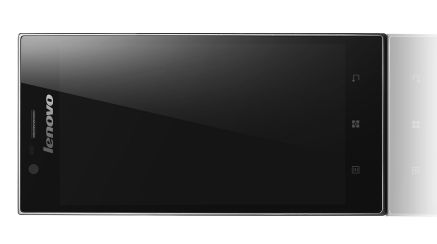Lenovo looks to grab 'em with 5.5 IPS, Intel packing K900
Look at me!

It may only be shipping to China for now (actually three months from now) but Lenovo's new K900 smartphone is worth taking a look at.
Announced during CES 2013, the company's new flagship phone sports a 5.5-inch IPS display and a 6.9mm side view. 6.9mm? Seems there was another phone announced today with just that profile.
What sets the Android-running K900 apart from its preceding smartphone is its processor: it will be packed Intel's new Z2580 dual-core chip aimed at forthcoming handsets.
The screen stands a solid 1080p and 440-plus pixels, allowing Lenovo to stake the claim that has the first IPS display of its size with the Full HD res.
Good, K9
The phone's a mesh of stainless steel alloy and polycarbonate material, creating a Unibody bod that's as strong and sharp as appears.
For the pocket conscious, Lenovo said the rear 13MP camera and sensor stay within the shell of the phone - no protruding bump here.
The camera also comes with a F1.8 focal length lens, meaning users can take clear, flash-less photos. On the front side of things, Lenovo's stretched out that camera to an 88-degree angle, the "widest available" for a phone's front camera.
Sign up for breaking news, reviews, opinion, top tech deals, and more.
And to look after Intel's new chip (of which full specs aren't yet public), it's coated the screen in Gorilla Glass 2 for protection.
Lenovo didn't announce pricing, but we hope we see some iteration of this phone make it out of China before long. It sounds like it could really hold its own.

Michelle was previously a news editor at TechRadar, leading consumer tech news and reviews. Michelle is now a Content Strategist at Facebook. A versatile, highly effective content writer and skilled editor with a keen eye for detail, Michelle is a collaborative problem solver and covered everything from smartwatches and microprocessors to VR and self-driving cars.